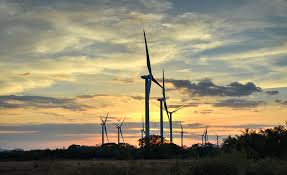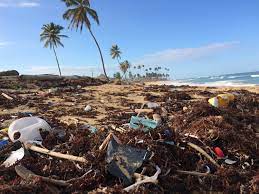Environmental/Ecological Sustainability and Environmental Management
Environmental/Ecological sustainability is the process of making sure current processes of interaction with the environment are pursued with the idea of keeping the environment as pristine as naturally possible based on ideal seeking behavior.
In ecology, the word describes how biological systems remain diverse and productive over time. Sustainability in general terms requires that human activity only uses nature’s resources at a rate at which they can be replenished naturally.
An unsustainable situation occurs when the sum total of nature’s resources is used up faster than it can be replenished. The long-term result of environmental degradation is the inability to sustain human life. Such degradation on a global scale could imply extinction for humanity.
Sustainability, on the other hand is the capacity to endure. Healthy wetlands and forests are examples of sustainable biological systems, a healthy ecosystem and environment provide vital goods and services to humans and other organisms when sustainably in use.
Achieving sustainability in the use of resources is also a social challenge that entails international and national laws, urban planning and transport, local and individual lifestyles and ethical consumerism.
Ways of living more sustainably can take many forms from reorganizing living conditions, reappraising economic sectors, or work practices, using science to develop new technologies, to adjustments in individual lifestyles that conserve natural resources.
There are two major ways of reducing negative human impacts and enhancing ecological sustainability. The first is environmental management which is based largely on information gained from earth science, environmental science, and conservation biology.
The second approach which is the management of human consumption of resources is based largely on information gained from economics.
Environmental Management
At the global scale and in the broadest sense, environmental management involves the atmosphere, oceans, freshwater systems and land but following the sustainability principle of scale, it can be equally applied to any ecosystem from a tropical rainforest to a home garden.
Atmosphere
The management of the global atmosphere now involves assessment of all aspects of the carbon cycle to identify opportunities to address human-induced climate change and this has become a major focus of scientific research because of the potential catastrophic effects on biodiversity and human communities.
Other human impacts on the atmosphere include the air pollution in cities, the pollutants including toxic chemicals like nitrogen oxides, sulphur oxides, volatile organic compounds and particulate matter that produce photochemical smog and acid rain, and the chlorofluorocarbons that degrade the ozone layer.
nthropogenic particulates such as sulphate aerosols in the atmosphere reduce the direct irradiance and reflectance of the Earth’s surface, (known as global dimming). The decrease is estimated to have been about 4% between 1960 and 1990 although the trend has subsequently reversed.
Global dimming may have disturbed the global water cycle by reducing evaporation and rainfall in some areas. It also creates a cooling effect and this may have partially masked the effect of greenhouse gases on global warming.
Fresh water and Oceans
Awareness of the global importance of preserving water for ecosystem services has only recently emerged. During the 20th century, more than half of the world’s wetlands have been lost along with their valuable environmental services.
Increasing urbanization pollutes clean water supplies and much of the world still does not have access to clean, safe water. Greater emphasis is now being placed on the improved management of blue (harvestable) and green (soil water available for plant use) water, and this applies at all scales of water management.
Ocean circulation patterns have a strong influence on climate and weather and, in turn, the food supply of both humans and other organisms. Scientists have warned of the possibility, under the influence of climate change, of a sudden alteration in circulation patterns of ocean currents that could drastically alter the climate in some regions of the globe.
Land use
Loss of biodiversity stems largely from the habitat loss and fragmentation produced by the human appropriation of land for development, forestry and agriculture as natural capital is progressively being converted to man-made capital.
Land use change is fundamental to the operations of the biosphere because alterations in the relative proportions of land dedicated to urbanization, agriculture, forest, woodland, grassland and pasture have a marked effect on the global water, carbon and nitrogen biogeochemical cycles and these can impact negatively on both natural and human systems. At the local human scale, major sustainability benefits accrue from sustainable parks and gardens and green cities.

Food is essential to life and feeding more than six billion human bodies on Earth takes a heavy toll on the Earth’s resources. This begins with the appropriation of about 38% of the Earth’s land surface and about 20% of its net primary productivity.
Added to this are the resource-hungry activities of industrial agribusiness i.e. everything from the crops’ need for irrigation water, synthetic fertilizers and pesticides to the resource costs of food packaging, transport and retail. Environmental problems associated with industrial agriculture and agribusinesses are now being addressed through such movements as sustainable agriculture, organic farming and more sustainable business practices.
Management of Human Consumption
The underlying driver of direct human impacts on the environment resource use is human consumption.
Read Also : How to Reduce the Amount of Wastes Produced
This impact is reduced not only by consuming less but by also making the full cycle of production, use and disposal more sustainable. Consumption of goods and services can be analyzed and managed at all scales through the chain of consumption, starting with the effects of individual lifestyle choices and spending patterns, through to the resource demands of specific goods and services, the impacts of economic sectors, through national economies to the global economy.
Analysis of consumption patterns relates resource use to the environmental, social and economic impacts at the scale or context under investigation. The ideas of embodied resource use, resource intensity, and resource productivity are important tools for understanding the impacts of consumption.
The key resource categories relating to human needs are food, energy, materials and water which is discussed below.
Energy
Since the industrial revolution, the concentrated energy of the Sun stored in fossilized plants as fossil fuels has been a major driver of technology which, in turn, has been the source of both economic and political power.
In 2007 climate scientists concluded that there was at least a 90% probability that atmospheric increase in CO2 was human-induced, mostly as a result of fossil fuel emissions but, to a lesser extent from changes in land use.
Stabilizing the world’s climate will require high-income countries to reduce their emissions by 60–90% over 2006 levels by 2050 which should hold CO2 levels at 450–650 ppm from current levels of about 380 ppm. Above this level, temperatures could rise by more than 2°C to produce catastrophic climate change.
Reduction of current CO2 levels must be achieved against a background of global population increase and developing countries aspiring to energy-intensive high consumption Western lifestyles.

Reducing greenhouse emissions, referred to as decarbonization, is being tackled at all scales, ranging from tracking the passage of carbon through the carbon cycle to the commercialization of renewable energy, developing less carbon-hungry technology and transport systems and attempts by individuals to lead carbon neutral lifestyles by monitoring the fossil fuel use embodied in all the goods and services they use.
Water
In the 1951–60s, human water withdrawals were four times greater than the previous decade. This rapid increase resulted from scientific and technological developments impacting through the economy especially increase in irrigated land, growth in industrial and power sectors, and intensive dam construction on all continents.
These changes altered the water cycle of rivers and lakes, affected their water quality and had a significant impact on the global water cycle.
Currently 35% of human water use is unsustainable (reference), drawing on diminishing aquifers and reducing the flows of major rivers. This percentage is likely to increase if climate change impacts become more severe, populations increase and aquifers become progressively depleted and supplies become polluted and unsanitary.
From 1961 to 2001, water demand doubled for agricultural use as it increased by 75%, industrial use by more than 200%, and domestic use increased by more than 400%.
In the 1990s it was estimated that humans were using 40–50% of the globally available freshwater in the approximate proportion of 70% for agriculture, 22% for industry, and 8% for domestic purposes with total use progressively increasing.
Water efficiency is being improved on a global scale by increased demand management, improved infrastructure, improved water productivity of agriculture, minimizing the water intensity of goods and services, addressing shortages in the non-industrialized world, concentrating food production in areas of high productivity, and planning for climate change.
At the local level, people are becoming more self-sufficient by harvesting rainwater and reducing use of mains water.
Food
The American Public Health Association (APHA) defines a sustainable food system as one that provides healthy food to meet current food needs while maintaining healthy ecosystems that can also provide food for generations to come with minimal negative impact to the environment.
A sustainable food system also encourages local production and distribution infrastructures and makes nutritious food available, accessible, and affordable to all. Furthermore, it is humane and just, protecting farmers and other workers, consumers, and communities.
At the global level the environmental impact of agribusiness is being addressed through sustainable agriculture and organic farming. At the local level, there are various movements working towards local food production, more productive use of urban wastelands and domestic gardens including permaculture, urban horticulture, local food, sustainable gardening, and organic gardening,
Materials
As global population and affluence has increased, so has the use of various materials increased in volume, diversity and distance transported. Some of these are included here e.g. raw materials, minerals, synthetic chemicals, manufactured products, food, living organisms and waste.
Sustainable use of raw materials has targeted the idea of dematerialization, converting the linear path of materials to a circular material flow that reuses materials as much as possible, much like the cycling and reuse of waste in nature.
This approach is supported by product stewardship and the increasing use of material flow analysis at all levels, especially individual countries and the global economy.
Synthetic chemical production includes everything from herbicides, pesticides and fertilizers to domestic chemicals and hazardous substances.
Apart from the build-up of greenhouse gas emissions in the atmosphere, chemicals of particular concern include heavy metals, nuclear waste, chlorofluorocarbons, persistent organic pollutants and all harmful chemicals capable of bioaccumulation.
Although most synthetic chemicals are harmless, there is still the need to rigorously test new chemicals in all countries for adverse environmental and health effects.
International Legislation has been established to deal with the global distribution and management of dangerous goods. To reduce waste, industry, businesses and the Governments are now mimicking nature by turning the waste produced by industrial metabolism into new resource for use.
Dematerialization is being encouraged through the ideas of industrial ecology, ecodesign and ecolabelling. In addition to the well-established “reduce, reuse and recycle” shoppers are using their purchasing power for ethical consumerism.
Ecological footprint as elements of resources sustainability
The Ecological footprint measures human consumption in terms of the biologically productive land needed to provide the resources and absorb the wastes of the average global citizen.
Read Also : Methods of Disposal of Waste Pesticide Containers
Ecological footprint can also be said to measure the area of biologically productive land and water required to produce the resources and absorb the waste of a given population and this is expressed in global hectares i.e hectares with world-average biological productivity.
For instance, in 2008, 2.7 global hectares was required per person, 30% more than the natural biological capacity of 2.1 global hectares assuming no provision for other organisms.



